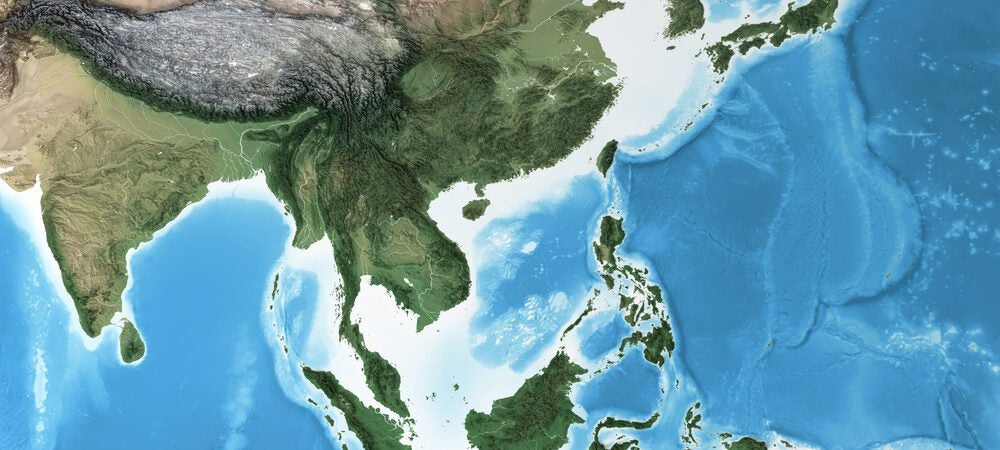The triumph of Donald Trump in the 2016 US presidential election fundamentally changed how the economic policy strategists in East Asia and the Pacific must think about the US role in the global trade regime. They had to get used to the idea that the new regional economic order would have to be founded on the assumption that the United States will not be a partner in East Asian regionalism or show leadership on trade and global economic governance, for at least the next few presidential terms.
Even if the United States manages to avoid the calamity — for its democratic institutions, social cohesion and international standing — of a second Trump term after 5 November 2024, this remains the stark reality.
US Vice President Kamala Harris and the Democrats reject the worst excesses of Trumpian mercantilism, which now includes a promise to levy blanket tariffs of 10 to 20 per cent on all imports — with a 60 per cent rate on imports from China — though they too promise episodic tariffs on China.
Harris and her party may be not as radicalised against the basic principles of economics as Trumpian Republicans. But with their focus on ‘middle class economic diplomacy’, they have no intellectual counter-narrative about the way in which America’s slide into isolationism and protectionism will undermine its economic strength and political power. And their instinct is to succumb to the political incentives to play on Trump’s policy turf.
The ‘America First’ trade policy has won a strategic victory over the past eight years, shifting the US bipartisan consensus towards the idea that globalisation was a lousy deal for Americans.
Under the Biden administration, Trump’s tariffs on China and Washington’s undermining of the World Trade Organization (WTO) dragged on. US abuse of the General Agreement on Tariffs and Trade’s security exception to force decoupling from China in purportedly ‘strategic’ industries also became more deeply entrenched, and its case for WTO reform remained unprosecuted.
There is no reason to expect this consensus won’t stick for years to come, even if Trump loses the election. If Harris becomes president, she will be playing political defence from day one. She will face a polarised electorate, a divisively partisan Supreme Court and possibly a recalcitrant Republican-controlled Congress — all while looking towards a re-election campaign that will depend on shoring up support in states hit hard by deindustrialisation.
With the Trump–Biden policy status-quo momentarily coinciding with full employment, moderating inflation and strong wage growth, a Democratic administration will have next to no incentive to give Trump an opportunity to accuse it of selling out US interests to foreigners by lowering barriers to trade and investment, regardless of whether they are negotiated via bilateral sweetheart deals or (less likely) through multilateral agreements.
What does this mean for Asia’s economies and the hard choices that Asian economic policy strategists must make?
For one thing, they can’t count on the WTO being of very much use in governing the terms of their trade and investment relationships with the United States. Trump’s approach to trade was notoriously transactional, with deals struck on a sweetheart basis where countries that are most politically useful have the inside track. The Biden-era approach to ‘friendshoring’ is merely a more genteel variety of the same, where access to US markets and concessions are contingent upon political fealty and usually bring economic self-harm. The Nippon Steel debacle defines the limits to economic quid-pro-quos.
And while the Democrats are now — if only by default — the party of internationalism and multilateralism, Biden-era foreign policy has also seen US consolidation of strategic competition with China as a central pillar of US foreign policy. This strategy, with China being Asia’s principal economic partner by far, cuts to the core of Asian economic interests. Under Harris it is likely that engagement with multilateral institutions, and Washington’s international economic diplomacy, will continue to be hostage to that mission.
It follows from this — the very dry gully of US leadership on trade and global economic governance, and diverging visions for China’s place in the regional order and global economy — that three broad principles must shape Asia’s response to these American realities:
Solidarity — especially if Trump is re-elected — and resisting the urge to play Trump’s transactional approach in foreign relations to carve out special deals at the expense of regional partners will be the key. Countries with strong security ties to the United States — Japan, Australia and South Korea — will need to keep the interests of Southeast Asian and non-aligned partners in mind or risk a total breakdown in trust and cooperation that compromises regional stability.
Openness is the guiding principle — recognition that open regionalism means that frameworks need to be kept in place to ring-fence multilateral engagement including with China, and at some point down the track, hopefully the United States.
Activism is a sine qua non — this means proactive diplomacy to defend the core WTO framework, including by strengthening the Multi-Party Interim Appeal Arbitration Arrangement, such that if and when political consensus in the United States shifts there is a framework to engage with it. Whether Harris or Trump emerges the winner in next month’s election, Asia’s international economic diplomatic challenge remains the same — to double down on strategies that accord top priority to keeping the global multilateral trade enterprise alive, while the United States is missing from it. Failure to do so would risk Asia’s prosperity and do untold damage to regional political stability.
Peter Drysdale is Head and Liam Gammon is a Research Fellow of the East Asian Bureau of Economic Research at The Australian National University.
To read the analysis as it was published on the East Asia Forum webpage, click here.

